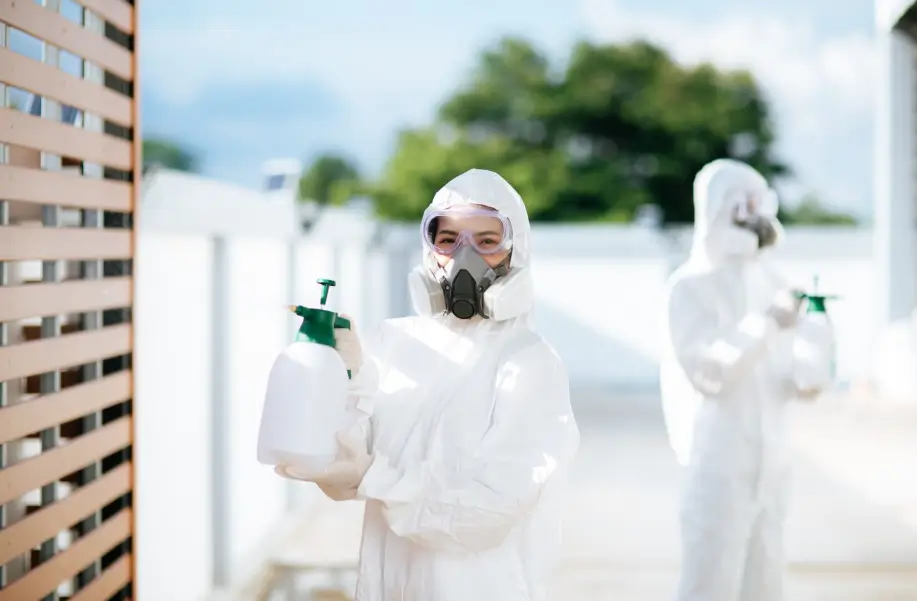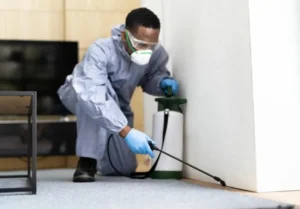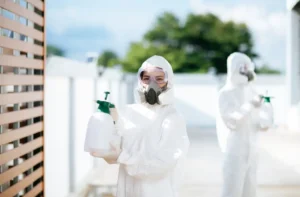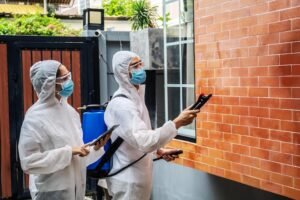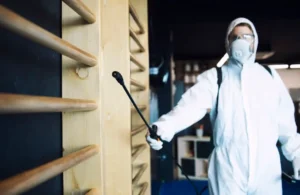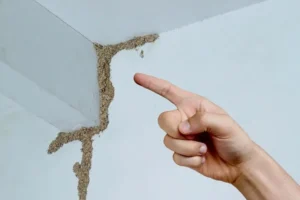The Tidewater region presents different kinds of challenges for termite control due to its coastal climate, soil conditions, and building practices. Norfolk homeowners need specialized knowledge and experience to protect their properties from the termite species that thrive in this environment. Knowing regional termite behavior and effective control strategies helps property owners make informed decisions about protecting their investments.
Tidewater’s Termite Species & Behavior
Subterranean termites dominate the pest land in Norfolk and surrounding Tidewater communities. These ground-dwelling insects build extensive underground colonies that can contain hundreds of thousands of individuals. Worker termites from these colonies travel through mud tubes to reach wood sources in homes, often remaining undetected for extended periods while causing significant structural damage.
Eastern subterranean termites, the primary species in the region, adapt well to coastal Virginia’s climate and soil conditions. These termites can travel considerable distances from their colony sites to reach food sources, making detection and control more challenging than in areas with different termite species.
Colony Development & Expansion
Tidewater’s mild winters allow termite colonies to remain active throughout most of the year. While reproductive activity peaks during spring months, worker termites continue feeding on structural components during cooler periods. This extended activity season increases the possibility of damage compared to regions where termites become dormant during winter months.
Mature colonies can produce winged reproductive termites that establish new colonies in nearby areas. These swarming events typically occur during warm, humid conditions following rain events. Norfolk’s frequent spring and summer thunderstorms create ideal conditions for termite swarming and new colony establishment.
Regional Risk Factors & Property Vulnerabilities
Norfolk’s proximity to water sources creates consistently high humidity levels that termites require for survival. Properties near rivers, creeks, or other water features face increased risk due to increased moisture levels in surrounding soils and air. These conditions support larger termite populations and more aggressive feeding behavior.
Coastal soil conditions affect how termites travel and establish colonies around structures. Sandy soils common in many Norfolk neighborhoods provide easy tunneling conditions for subterranean termites. These soils also drain quickly after rain events, creating moisture gradients that can draw termite colonies toward foundation areas.
Building Practices & Vulnerability
Many Norfolk homes were built using construction practices that inadvertently create termite-friendly conditions. Concrete slab foundations with minimal clearance between wood components and soil provide easy access for termite colonies. Crawl spaces with inadequate ventilation or moisture barriers create ideal conditions for termite activity.
Older properties may have settling issues that create cracks in foundation walls or gaps around penetrations. These openings provide termite access points that bypass normal soil treatment barriers. Regular inspection and maintenance help identify these vulnerabilities before they lead to infestation problems.
Specialized Detection Methods for Tidewater Properties
Termite detection in coastal environments requires knowing how regional conditions affect termite behavior and damage patterns. High humidity levels can mask moisture meters readings, making it more difficult to distinguish between environmental moisture and moisture from termite activity or damage.
Professional inspectors familiar with Tidewater conditions know where to look for termite activity based on local building practices and environmental factors. They know how drainage patterns, land choices, and construction details affect termite risk in specific neighborhoods and property types.
Advanced Inspection Technology
Thermal imaging cameras help detect temperature variations that indicate termite activity or moisture problems in coastal environments. These tools can identify issues behind walls or in areas where visual inspection is limited. Knowing how coastal humidity affects thermal readings requires specialized training and experience.
Acoustic detection equipment can identify termite feeding sounds that might be masked by ambient noise from nearby traffic or water features. Professional inspectors know how to use these tools effectively in Norfolk’s urban and suburban environments.
Treatment Approaches for Coastal Properties
Liquid termiticide applications must account for soil conditions and drainage patterns common in Tidewater properties. Sandy soils may require different application rates or injection patterns compared to clay soils found in other regions. Knowing these differences ensures treatment effectiveness and longevity.
Baiting systems often work well in coastal environments because they do not rely on soil conditions for effectiveness. These systems can be particularly valuable for properties where traditional liquid treatments may not provide optimal results due to drainage issues or soil characteristics.
Environmental Considerations
Treatment applications near water features require special attention to environmental safety requirements. Some treatment products may not be appropriate for use near wells, streams, or wetland areas. Professional applicators know these restrictions and select appropriate treatment methods for specific site conditions.
Tidal influences can affect groundwater levels and drainage patterns around Norfolk properties. Treatment timing and methods may need adjustment to account for these factors and ensure optimal treatment performance over time.
Ongoing Protection & Monitoring
Termite protection in coastal environments requires ongoing attention due to constantly changing environmental conditions. Regular inspections help identify new vulnerabilities that may develop as properties age or as surrounding conditions change. Annual monitoring ensures treatment systems continue providing effective protection.
Weather events common in coastal Virginia can affect termite behavior and treatment effectiveness. Hurricane damage, flooding, or severe storms may create new termite access points or affect existing treatment barriers. Post-storm inspections help identify any issues that need attention to maintain protection levels.
Seasonal Considerations
Spring inspections are particularly important in Tidewater because they occur before peak termite activity begins. These evaluations can identify any winter damage or changes in property conditions that might affect termite risk during the upcoming active season.
Fall assessments help determine how well protection systems performed during the active season and identify any maintenance needs before winter. These inspections also provide opportunities to address any moisture problems before they worsen during the rainy winter months.
Professional Service Selection
Choosing termite control services requires finding providers with specific experience in coastal Virginia conditions. Local knowledge about soil types, climate patterns, and building practices significantly impacts treatment success. Providers should demonstrate knowledge of regional termite species and their behavior patterns.
Effective termite control in Norfolk requires ongoing relationships with service providers rather than one-time treatments. Regular monitoring, warranty programs, and responsive service help ensure long-term protection against the termite pressures common in Tidewater environments.

